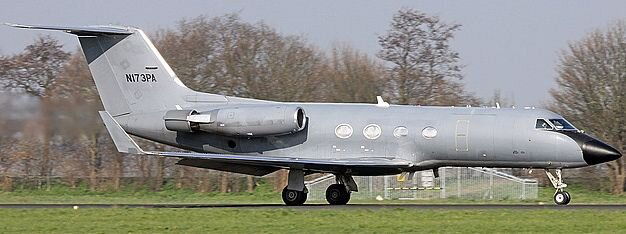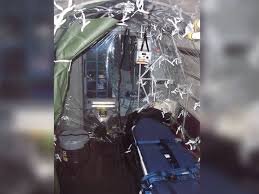Part I : Introduction (Warning Linux Content Ahead, PERL Too)
I just noticed this SDR related forum recently. I have a project I have been working on but want to throw it out here for anyone that is interested in taking it further. I have been busy building my dish farm and have not had time for this endeavor.
The output of the project, using PERL, in its current state is aircraft type, base of operation, unit information and some comments about the aircraft. Output is to a text log using tail to see live output, not very fancy. Its sorta fun to go over the log when you get home from work. You can see that Looking Glass (the Doomsday Plane) has overflown your house while you are at work! You will also learn about very specialized aircraft in the US fleet.
http://en.wikipedia.org/wiki/Operation_Looking_Glass
There are some rare types with only one or two in existence. I won't mention any of that here, but you will find them. Surprisingly Wikipedia has a lot of info on these types. You will be amazed that you did not realize how much is going on right over your head.
It was first developed on the raspberry pi in Debian Wheezy. I went ahead and built a mini ITX box with loads of RAM, a 3.4Ghz dual core processor and a 250 Gig SSD. Wow what a difference. Loaded Debian 3.2.0-4-amd64 #1 SMP Debian 3.2.54-2 x86_64 GNU/Linux.
As I am writing this I just remembered I rewrote this project entirely in Visual Basic .NET for Windows, using adsb# or adsbscope for Windows as the data source I think. So a 100% Windows version is possible.
Maybe I will post it later but It is very rough. I was a programmer long ago and this is just a hobby now.
First Step:
Go here and get Dump1090 running as a service that starts at startup:
http://www.satsignal.eu/raspberry-pi/dump1090.html
I use the following line in dump1090.sh when starting the service:
PROG_ARGS="--quiet --net --net-ro-size 500 --net-ro-rate 5"
Go ahead ahead and get familiar with Dump1090. Bring up a browser and play around with it, although the GUI wont be used here.
Next go here and get familiar with this project (navigation is difficult):
http://www.live-military-mode-s.eu/
Particularly this page and you will see where this is leading:
http://www.live-military-mode-s.eu/overviewUS.php
Here is a sample of the data:
AE035E 58-0077 KC-135T K35R PA ANG | 171ARW [KPIT] confirmed Geilenkirchen Source: own log
KC-135T K35R PA ANG | 171ARW [KPIT] confirmed Geilenkirchen Source: own log
This is a KC-135T from the Pennsylvania Air National Guard, 171st Air Refueling Wing based out of Pittsburgh International Airport. Some entries will include a picture of the actual aircraft or just a stock picture.
End of Part I
I just noticed this SDR related forum recently. I have a project I have been working on but want to throw it out here for anyone that is interested in taking it further. I have been busy building my dish farm and have not had time for this endeavor.
The output of the project, using PERL, in its current state is aircraft type, base of operation, unit information and some comments about the aircraft. Output is to a text log using tail to see live output, not very fancy. Its sorta fun to go over the log when you get home from work. You can see that Looking Glass (the Doomsday Plane) has overflown your house while you are at work! You will also learn about very specialized aircraft in the US fleet.
http://en.wikipedia.org/wiki/Operation_Looking_Glass
There are some rare types with only one or two in existence. I won't mention any of that here, but you will find them. Surprisingly Wikipedia has a lot of info on these types. You will be amazed that you did not realize how much is going on right over your head.
It was first developed on the raspberry pi in Debian Wheezy. I went ahead and built a mini ITX box with loads of RAM, a 3.4Ghz dual core processor and a 250 Gig SSD. Wow what a difference. Loaded Debian 3.2.0-4-amd64 #1 SMP Debian 3.2.54-2 x86_64 GNU/Linux.
As I am writing this I just remembered I rewrote this project entirely in Visual Basic .NET for Windows, using adsb# or adsbscope for Windows as the data source I think. So a 100% Windows version is possible.
Maybe I will post it later but It is very rough. I was a programmer long ago and this is just a hobby now.
First Step:
Go here and get Dump1090 running as a service that starts at startup:
http://www.satsignal.eu/raspberry-pi/dump1090.html
I use the following line in dump1090.sh when starting the service:
PROG_ARGS="--quiet --net --net-ro-size 500 --net-ro-rate 5"
Go ahead ahead and get familiar with Dump1090. Bring up a browser and play around with it, although the GUI wont be used here.
Next go here and get familiar with this project (navigation is difficult):
http://www.live-military-mode-s.eu/
Particularly this page and you will see where this is leading:
http://www.live-military-mode-s.eu/overviewUS.php
Here is a sample of the data:
AE035E 58-0077
This is a KC-135T from the Pennsylvania Air National Guard, 171st Air Refueling Wing based out of Pittsburgh International Airport. Some entries will include a picture of the actual aircraft or just a stock picture.
End of Part I
Last edited:





